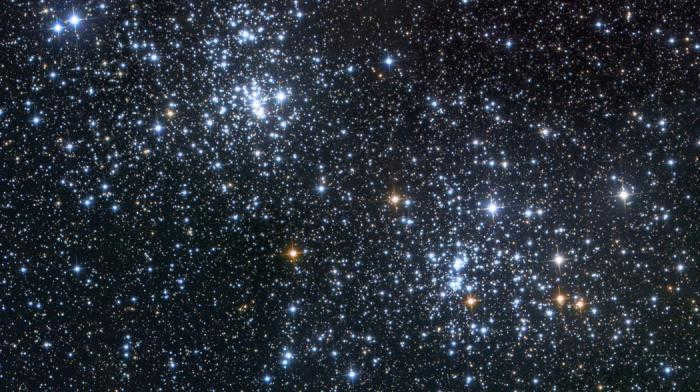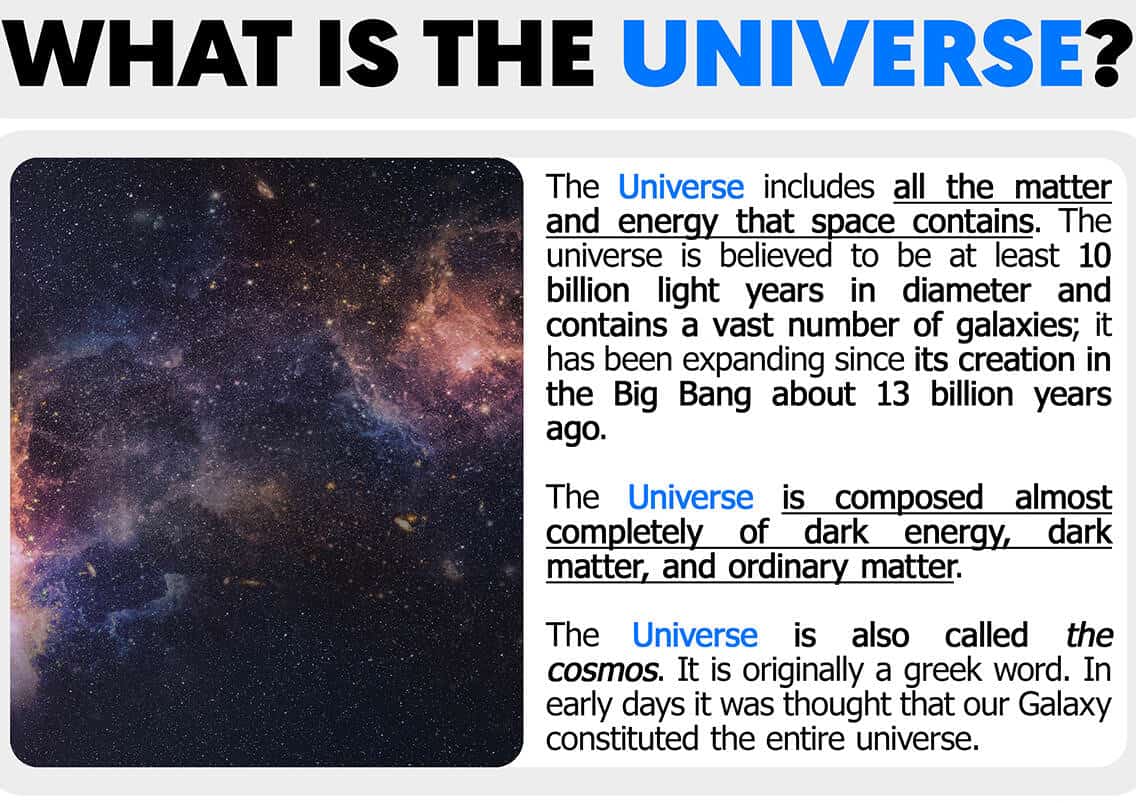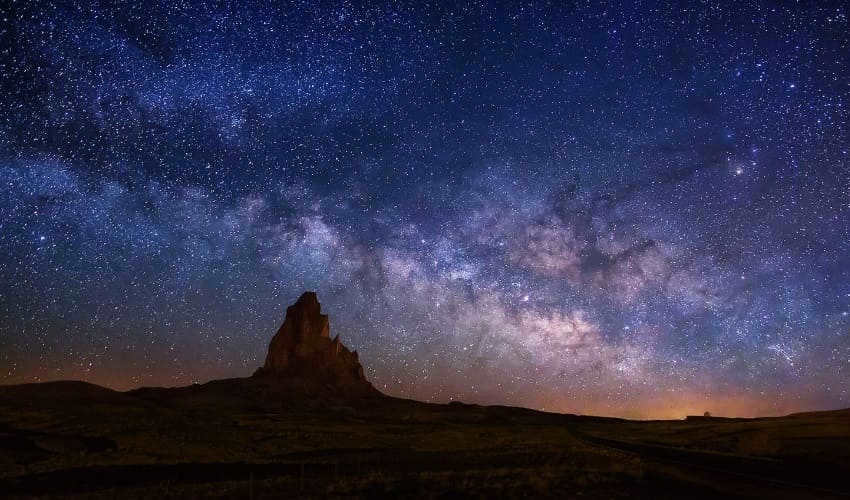
The notion of the universe lacks a precise scientific definition. In the past, philosophers and astronomers used it to describe “all of space”.
Consequently, terms such as “cosmos”, “macrocosmos”, “world”, and others were considered synonymous with the term “Universe” in various societies and cultures.
The advancement of mathematics, physics, and astronomy in the 20th century has fundamentally altered scientists’ perspectives on the origins and evolution of the Universe. It turns out that the Universe is not eternal and unchanging; it has a beginning and, potentially, an end.
Astonomers have made a groundbreaking discovery in the observable part of the Universe, uncovering an extraordinary phenomenon known as the “red shift.” This phenomenon provides evidence that approximately 14 billion years ago, a truly remarkable event occurred in the Universe, comparable to the creation of the world or an unimaginably colossal explosion.
The aftermath of this event is what has shaped the Universe as we know it today.
What is the origin of the Universe?
The question of where the Universe came from has long intrigued humanity. Scientists posit that the Universe originated from a phenomenon known as the “Big Bang,” which occurred approximately 10-20 billion years ago.
At the outset, the Universe existed as a luminous mass of highly dense matter, where space and time were indivisible. Gravity emerged in the initial moments following the explosion.
The Universe rapidly expanded and became populated by subatomic particles that collided, leading to the formation of protons and neutrons. Within three minutes, as the temperature decreased, these protons and neutrons combined to create the simplest elements: hydrogen, helium, and lithium.
According to the Big Bang theory, this entire process spanned around 500,000 years, and after an additional 300 million years, stars and galaxies began to form.
Many stars were born and perished before our Sun and the planets of the Solar System formed in the Milky Way galaxy from a cloud of dust and gas.
Does the Earth occupy the central position in the universe?
The ancient Greek philosopher Aristotle proposed that the heavens consisted of 55 concentric crystal spheres that rotated at different speeds, with celestial objects attached to them, and the Earth positioned at the center.
This belief persisted for nearly 2000 years until Nicolaus Copernicus, a Polish astronomer, introduced the idea that the center of the solar system is not the Earth, but the Sun.
In his heliocentric system, he asserted that the Earth is merely one of the planets, positioned third from the Sun, and that the Moon orbits around the Earth, not the Sun.
Scientists posit that the Universe originated from the “Big Bang”. Clues about the formation and expansion of the universe can be gleaned from background microwave radiation and infrared rays.
An account of the universe’s history
Every investigation, every observation, whether it be a child observing a feline, a physicist observing the splitting of an atomic nucleus, or an astronomer observing a galaxy inconceivably far away, amounts to an observation of the Universe, or rather its constituent parts.
Each of these parts is the subject of scrutiny for the natural sciences, and the Universe as a whole is the focus of cosmology – a discipline that emerged at the intersection of astronomy and physics. Astronomical observations have enabled the establishment of the Universe’s expansion and the determination of its precise age.
Using precise mathematical methods and physical theories, cosmologists have successfully described the initial state and early stages of the Universe, despite the fact that certain processes from that time do not adhere to conventional physical laws.
While some philosophers, scientists, and religious leaders refer to the Big Bang as the moment of “creation” of the Universe, there is a growing body of evidence suggesting that the Universe has always existed and will continue to exist indefinitely, with only its forms and manifestations changing.
Nowadays, the primary focus of theoretical cosmologists and observational astronomers lies in determining the precise dimensions of the Universe, exploring its evolution from the initial moments after the Big Bang up until the present, examining the intricacies of its expansion, and establishing the cosmological distance scale.
There is still much that remains unknown and subject to debate, as nearly all the knowledge we currently possess about the Universe is derived indirectly.
Consequently, the development of increasingly advanced instruments for observing objects in distant regions of the cosmos and the quest for empirical evidence to support scientific theories hold immense significance.
Universal Inflation
Universal inflation is not related to the devaluation of currency. The term “inflation” is derived from the Latin word that means “expansion” or “bloated”. While in economics it refers to an increase in the money supply, in cosmology it describes the initial phase of the Universe’s expansion.
During this period, temperatures reached incredibly high levels – to express them numerically, one would need a unit with 28 zeros. The volume of space expanded rapidly, while the energy per unit volume remained constant.
The inflationary expansion occurred within an extremely short period of time, so short that it would be impossible if the pressure in the early Universe had a positive value.
Nevertheless, based on the assessments made by specialists, the outcome was unfavorable – this type of occurrence cannot typically exist in gases or liquids in ordinary circumstances.
Moreover, it is incredibly challenging to envision this scenario – at a negative pressure, the usual force of gravity, commonly referred to as “attraction”, actually results in repulsion, leading to a rapid and explosive expansion. This phenomenon is known as “inflation” or “ballooning”.
It may appear that the Earth is positioned at the center of the Universe since the galaxies are dispersing in all directions from the perspective of the observer on Earth. However, this is not the case. Through the examination of the nature of this movement and its relationship with distance, it has been determined that galaxies are drifting apart in relation to one another.
In essence, the entire Universe is in a continual state of expansion at every point. This expansion is not akin to an explosion, where fragments are propelled in all directions from a single point. Instead, envision the space between galaxies expanding rather than the galaxies themselves. Can you grasp this concept?
If not, the simplest model can be represented by a soap bubble or a slowly expanding rubber balloon, with the galaxies’ positions marked on its surface. As the balloon expands, the marked points gradually move farther apart.
They are not moving towards or away from anything. The “scattering” is solely caused by the expansion of the surface on which the points are plotted.
Let’s envision beings inhabiting a world with only two dimensions – length and width. Their entire universe consists of a surface.
And if they resided on the surface of an inflated balloon, the “inflation” would correspond to the expansion of their Universe. All distances are increasing, and there is no central point of expansion that could be observed by these “two-dimensional” observers within their universe.
One interesting aspect of this world is that the two-dimensional creatures cannot ever reach the edge of their universe, regardless of which direction they travel. The boundary simply does not exist, even though the surface area of the balloon is finite and can be measured in square centimeters.
This demonstrates how something finite can transform into something limitless and infinite.
Is it possible for the universe to decrease in size?
As per the hypothesis of the “Great Compression,” there will come a time when all matter will reverse its motion and the universe will contract back into the original blob from which it originated.
Alternatively, another theory suggests that the expansion of the universe will gradually decelerate until it reaches a point of nearly stopping, resulting in the size of the universe remaining relatively constant.
Since the occurrence of the Big Bang, the Universe has commenced its expansion. Subsequently, stars, galaxies, nebulae, and planets have emerged. The expansion process is still ongoing at present.
Until recently, the prevailing standpoint was that there was no conceivable way to observe beyond the singularity.
Nevertheless, there have been astronomers who hold a different viewpoint, asserting that scattered remnants exist within our Universe that serve as evidence for the existence of another Universe on the opposite side of the Big Bang.
Furthermore, a mathematical model of the Universe has been devised, depicting its existence prior to our Universe, but unlike our Universe, it was gradually contracting. Upon reaching an extremely dense state, it experienced a massive explosion known as the Big Bang, resulting in the birth of our Universe.
Is there only one way to go?
The expanding Universe model presents the process of expansion without addressing the question of when and why the Universe started expanding.
An even more intriguing question is whether its expansion will eventually be replaced by contraction. In theory, this is possible, but it depends on certain conditions. The most important factor is the average density of matter that is currently moving apart.
If this density is sufficiently high, gravitational forces will eventually overcome the inertia of the galaxies moving apart, leading to compression. However, if the density is low, the galaxies will continue to scatter indefinitely.
The Universe depicted on a map and through models
By replacing stars with galaxies that are currently known to astronomers, a completely different image is revealed on the celestial sphere compared to traditional star maps with their constellations.
Unlike the clustered and concentrated patterns seen in star maps, the galaxy map shows a network of individual points forming interconnected nodes and fibers. Interestingly, there are also areas with sparse points scattered throughout.
What is particularly fascinating is that the sizes of these network cells remain consistent across the entire celestial sphere.
Galaxies are not evenly distributed throughout the Universe, as it cannot be said. If you were to count the number of galaxies in each “cube” that has a size of 5 million light-years, the count would vary. In a majority of these “cubes,” there would be no galaxies present at all.
However, if a cube with a side length of 500 million light-years is “cut out” in any location of the Universe, it would contain approximately the same number of galaxies. Therefore, when discussing the uniformity of the observed Universe, we are referring to uniformity on the largest possible scale.
The various dimensions of the Universe
When arranging a meeting with someone, we commonly specify the location by saying: let’s meet on the ninth level of the building situated at the intersection of Victory Avenue and Akhsarova Street. However, it is also necessary to determine the timing of the meeting. Let’s set it for ten o’clock in the morning.
Therefore, we require four pieces of information to describe any event, including those occurring in the Universe. In this scenario, the information consists of Victory Avenue, Akhsarova Street, ninth level, and ten o’clock in the morning. Three of these elements indicate spatial position, while one pertains to time.
Our Universe is composed of three spatial dimensions and one temporal dimension. However, what if the Universe encompasses numerous dimensions? How many dimensions can the Universe theoretically possess?
There exist numerous theories regarding the functioning of the Universe. Certain scientists hold the belief that our Universe is merely a component of a vast array of other Universes, collectively referred to as the Multiverse.
Every individual Universe within this multiverse possesses distinct physical laws, with variations even in the speed of light.
What is the magnitude of our Universe?
We are already aware that our Universe had a “genesis” – the Big Bang, which transpired approximately 13.7 billion years ago. As a result, it is not boundless and must possess a specific spatial range.
Scientists approximate the expanse of our Universe at 13 billion light years.
And this is merely a minimum estimation, as the furthest of the recorded celestial signals – a potent gamma-ray burst – has reached the perimeters of the solar system from this distance.
The true size of the Universe remains a mystery. The Universe encompasses the boundless expanse that surrounds us, including planets, moons, stars, and galaxies. In the observable Universe alone, there are estimated to be more than 100 billion galaxies, which are immense conglomerations of stars.
The quantity of stars within each galaxy may vary, but it is likely that each galaxy contains billions of stars. It is truly impossible to fathom the vastness of our Universe!
What is the location of the universe’s boundary?
The true size of our Universe remains unknown as we are unable to observe anything beyond its “horizon”. The cosmic horizon represents the maximum distance that light can traverse in the empty space between stars since the occurrence of the Big Bang.
Democritus, an ancient Greek philosopher from 2500 years ago, was the first to propose that all matter in the universe is comprised of atoms (which he referred to as “eternal beginnings”). Additionally, he believed that the universe is infinite and teeming with numerous inhabited worlds akin to our own Earth.
What is the age of the Universe?
The Universe is continuously expanding, with star clusters, galaxies, and other cosmic bodies moving away from each other. This expansion is happening at a much slower pace than it did immediately after the Big Bang.
It is possible that the rate of expansion will eventually decrease due to gravitational forces between galaxies.
So, the question arises: how old is the Universe? The Big Bang occurred approximately 15 billion years ago, and around 10 billion years ago, massive spherical clusters of gas started to form.
Initially, these clusters were as cold as the space around them. However, over time, they began to spin, becoming denser and hotter. Eventually, the first faint stars ignited in the darkness of the Universe.
A very massive structure
As early as the beginning of the 20th century, scientists were aware that stars formed clusters, and these clusters combined to form galaxies. Later on, they discovered clusters and superclusters of galaxies.
By studying the distribution of stars and star clusters across the celestial sphere, astronomers have long since determined that it is not uniform.
For example, nearly all nearby globular clusters are concentrated in the region centered around the Sagittarius constellation, and the density of stars in our own galaxy increases as you move closer to its core and within the plane of its disk.
However, on a larger scale of about 1 billion light years, it was found that the universe is nearly uniform, without the expected discovery of new levels of cosmic hierarchy.
The issue of the structure of the Universe on a large scale is one of the most challenging topics in the field of cosmology and astrophysics. There is still a great deal of uncertainty surrounding this topic, with numerous theories that often contradict each other.
According to the most recent concepts, the Universe can be thought of as a collection of relatively flat “sheets” that are separated by regions where there is very little visible matter. These regions, known as voids, have an approximate size of 500 million light years.
The first “sheet” that astronomers were able to observe is known as the Great Wall, which is located around 200 million light years away from us.
This pancake-like structure of galaxies, which can be seen from above, is situated approximately 200 million light years away from us. It spans a width of 300 million light years and has a thickness of 15 million light years. This remarkable formation, known as the Great Wall, was only recently discovered in 1989.
The true size of the Great Wall remains uncertain as our view is obstructed by the clouds of dust and gas in the Milky Way.
Astronomers posit that structures like the Great Wall consist of a combination of normal matter and mysterious “dark matter,” with the latter playing a crucial role in determining the structure of the Universe on its grandest scales.
There is another impressive “formation” known as Sloan’s Great Wall. It is a massive collection of galaxies situated 1 billion light-years away from Earth and stretching out for 1.37 billion light-years. Sloan’s Great Wall is nearly three times larger than the Great Wall, which was previously considered the longest structure until the early 21st century.
The majority of the light in the Universe is concentrated within the “nodes” and “fibers” of its cellular composition. The nodes contain super clusters of galaxies, while the fibers may appear empty at first glance.
However, computer simulations have revealed that each “howdah” is similar to a miniature Universe – it is filled with “dark matter” that creates the same structure with fibers and howdah.
Additionally, there exist a number of diminutive faint galaxies floating around in the cosmos that we are unable to detect, as well as nebulous gas clouds that never evolved into galaxies.
The visible Universe’s cellular structure emerged in the immediate aftermath of the Big Bang. Whatever form matter took at that precise moment, it was inevitable that inhomogeneities – fluctuations – would manifest within it.
These inhomogeneities materialized everywhere, and as the Universe expanded, cells grew and “nodes” condensed. Computational analysis of this process revealed that it solely relied on gravitational forces, which are an inherent property of all mass-bearing bodies.
Who is responsible for the creation of the world?
In the ancient times, various cultures around the world had their own myths and legends that sought to explain the origin of the universe. Interestingly, many of these stories share similar themes and elements.
Typically, these myths commence with a depiction of chaos – a disorganized blend of all the fundamental elements. As the story unfolds, it narrates the emergence of a powerful force that brings about order, giving rise to celestial bodies, the Earth, and all living beings, including humanity.
Usually, this force is embodied in the form of the most ancient deities, with each civilization attributing their own unique name to this supreme being.
By the dawn of the 19th-20th centuries, astronomers had gathered a substantial amount of observations and uncovered the fundamental principles governing the movement of celestial objects. As is customary in any genuine scientific endeavor, it was now time to contemplate the findings.
It became evident that what we witness in the celestial realm did not materialize out of thin air – thus, the Universe possesses its own unique history. How, when, and why did it come into existence? What stages did it undergo during its evolution? What did it resemble in the bygone eras, and what transpired prior to the monumental event known as the Big Bang?
Throughout history, people have been inquisitive about the nature of the Universe. This curiosity spans from ancient times, when the Sun and the Moon were worshipped as gods, to the Age of Enlightenment, when the brilliant philosopher and nature researcher, Immanuel Kant, proposed a hypothesis about the origin of the solar system. Kant’s ideas were largely based on intuitive guesses and deep reflections. The pursuit of truth continued in the early 20th century, as astronomers armed themselves with the theories of relativity and quantum mechanics, enabling them to make groundbreaking discoveries about the past of our universe.
Even in our modern times, the quest for knowledge about the Universe persists. Astronomers now have an expanded arsenal of tools and methods for understanding and exploring the cosmos.
One of the fundamental principles of contemporary science is historicism. However, we are not referring to the study of history as a discipline that examines past human society, written records, and archaeological artifacts. In the realm of the natural sciences, historicism has primarily been observed in the fields of biology and geology.
For instance, geologists have determined the sequence of changes and the duration of geological epochs in our planet’s history. They have also developed techniques for dating rock layers based on the presence of radioactive elements and the products of their decay.
When studying living organisms, biologists realized as early as the mid-19th century that any phenomenon in this field must be viewed as a product of the long-term evolution of the natural environment.
The renowned scientist Charles Darwin (1809-1882) authored a groundbreaking work titled “The Origin of Species,” which delves into the evolution of animals and plants within their natural environment and how they are affected by changes in it.
In the 20th century, it became increasingly apparent that human beings also underwent a lengthy evolutionary process, complete with their own unique history.
While our planet and its history are open to investigation, the study of celestial bodies and the Universe as a whole poses a considerable challenge. The vast distances and immense time spans involved make this task incredibly complex, dwarfing the entire history of human civilization.
Nevertheless, curious researchers have managed to uncover traces of the Universe’s past within its current state. This valuable information must be painstakingly gathered piece by piece.
While we are unable to directly observe the entire lifespan of a single star, which can span billions of years, we have the ability to observe a vast array of stars at various stages of existence. These stars range from young and in their prime, to aging and depleted of energy. This wealth of observation allows us to construct a comprehensive “biography” of a star.
However, our knowledge of planetary systems is largely limited to our own, despite the fact that other stars often have gas and dust disks surrounding them, which may eventually lead to the formation of planets. By studying these systems, we are able to gain insight into the past of our own solar system, effectively traveling back in time.
The primary source of information about celestial bodies is light, which reaches us from the depths of outer space. Although light travels at a tremendous speed, it is not infinite, meaning that it takes time for light to reach Earth.
At present, astronomers are now fully convinced that the same physical laws govern any corner of the Universe, and these laws can be described by identical mathematical equations.
Furthermore, it is highly probable that these same laws were in effect in the distant past, when the Universe was much “younger” and conditions were quite different.
This level of confidence allows scientists to develop models of how large and small cosmic objects behave, including their origins. These models are based on established physical laws, and often new findings from astronomical observations confirm their validity and accuracy.
Self-love
How does a cable car operate?
How does an ear thermometer measure body temperature?
The deceptive “hidden mass”
Do all plants possess flowers?
- Australia and Oceania (40)
- Asia (30)
- America (59)
- Antarctica (15)
- Africa (26)
- Household appliances (35)
- Time (25)
- Dinosaurs (16)
- Europe (28)
- Mix (43)
- Internet and Computers (19)
- History and Archaeology (25)
- Space (285)
- Animal World (158)
- My Planet (134)
- Science and Technology (120)
- Society (60)
- Nature (160)
- Psychology (104)
- Agriculture (17)
- Tigers (26)
- Humans (131)
- Ecology (24)
What is the origin of the world we inhabit? This query has continuously captivated humanity. Initially, religion provided an answer. And the answer was straightforward – the world was brought into existence by a divine entity. Subsequently, science offered its own response, which, curiously enough, shared some similarities with religious concepts. In what manner? That’s what we’re going to delve into.


The origins of the query
There exists a phenomenon. In the first half of the 20th century, scientists held the belief that the universe had always been in existence. Indeed, there were alterations occurring. Stars and galaxies were born and ceased to exist, with some new entities taking their place, but overall, on the universal scale, nothing changed. However, certain pieces of evidence suggested that something was amiss. For instance, according to Newton’s theory of universal gravitation, all material objects in the universe – stars, interstellar gas, and other “trifles” like planets – should have been attracted to one another due to the force of gravity. And if the universe had existed eternally, then everything within it would have long ago coalesced into a singular point. Instead of a universe, we would have a universal black hole. These cosmic monstrosities have long been predicted, and recently, a photograph of one of them emerged.
Observe, the principle of universal gravitation. The celestial bodies are orbiting around the sun and not plummeting towards it. Indeed, this occurs precisely in accordance with the principles of Newtonian physics. However, if the entirety of the Cosmos is organized akin to our solar system, then it must possess a “universal sun,” a central point of gravitational attraction around which all else revolves. Yet, such a phenomenon has yet to be unearthed.
These incongruities served as the impetus for Einstein to conceive the General Theory of Relativity (GTR), which aimed to “rectify” Newton’s theory of gravity and elucidate the construction of the eternally existing Universe.
It was not successful. Certainly, OTR has proven itself in numerous observations. And not just that. It is enough to mention that without considering the effects anticipated by it, modern GPRS systems would not be able to function. However, the explanation of the perpetually existing Universe was unsuccessful.
Aircraft
Everything underwent a transformation during the first half of the 20th century, when an astounding phenomenon was discovered by the American astronomer Hubble. Distant galaxies are actually moving away from us. What’s more, it was revealed that the farther a galaxy is from us, the faster it is moving away. This discovery presented a truly universal paradox. However, an exceptional American physicist of Russian descent named Georgy Gamow was able to provide a remarkably simple explanation that even a schoolchild could comprehend. He suggested imagining a balloon that is constantly being inflated, causing its radius to steadily increase. On the surface of this balloon, let’s draw some points. If two points are close to each other, as the balloon inflates, the distance between them will also increase, but at a gradual pace. However, if the points are far apart, as the balloon expands, the distance between them will grow at a faster rate. Visualize this scenario, and everything will become clear.
According to Gamow, it can be concluded that the Universe is expanding in a similar manner to a balloon. As a result, galaxies that are further away from us (represented as points on the imaginary balloon) are moving away at a faster rate.
However, if the Universe is expanding, it must have had a starting point, a moment from which everything originated. This leads to questions about the evolution of our universe and what will happen to it in the future. Currently, only the second question has a clear answer. There are differing opinions on the first and third questions, but they lack confirmation. Therefore, we will not delve into them.
The accepted answer to the second question is the “Big Bang Theory,” which is widely acknowledged in the scientific community and continually supported by new observed phenomena.
The Origin of the Universe
Currently, scientists are extensively studying the phenomenon known as the “Big Bang Theory” and meticulously mapping out each stage of the universe’s development.
However, it is important to clarify one common misconception before delving into the details. Many individuals mistakenly believe that the universe came into existence when a massive explosion occurred in empty space. In reality, the “Big Bang” was a complex event that gave rise to the formation of the world as we know it today.
The Saga of the Cosmos
So, how did this extraordinary sequence of events unfold according to modern scientific understanding? Allow me to elucidate. It all began with a monumental event known as the “Big Bang”, which gave rise to our vast and awe-inspiring Universe – initially just a minuscule, imperceptible speck.
Now, let me provide you with a concise timeline of the captivating events that have transpired since this cosmic explosion.
- At a mere 10-45 to 10-37 seconds after the Big Bang, an extraordinary phenomenon called inflationary expansion occurred, causing the fabric of space to expand exponentially. Now, you might be wondering about the implications of Einstein’s Theory of Relativity. After all, it stipulates that the speed of light is an unattainable limit. However, the answer is quite straightforward. The constraints of Relativity pertain to the motion of tangible entities within our space. In this case, it was space itself that was undergoing expansion.
- As the expansion continued, the nascent Universe witnessed the emergence of quarks, electrons, and subsequently, an array of other elementary particles.
- The formation of atoms occurred approximately 400,000 years after the Beginning.
- After billions of years, the first stars, galaxies, and eventually planets came into existence.
- Eventually, after around ten to eleven billion years, life emerged on planet Earth and evolved into Homo sapiens.
“The Origin of the Universe and the Genesis of Life”
In this article, we have identified and categorized five distinct phases in the cosmic evolution, although there could potentially be more stages. If we were to take into account the duration it took for the initial emergence of Homo sapiens and their subsequent development into highly intelligent beings, we would have a total of six stages. This sequential progression aligns with the biblical narrative, which states that on the seventh day, the Creator ceased His creative activities and rested.
During the Palm Sunday liturgy in the Cathedral of Christ the Savior in April, Patriarch Kirill of Moscow and All Russia expressed the belief that the origin of the universe should be seen as a divine act of creation. The Primate of the Russian Orthodox Church stated that many scientists who consider themselves knowledgeable about the secrets of existence have failed to find God in their discoveries. He emphasized that the scientific knowledge about the universe is insignificant and that further research will only uncover a small portion of the divine mystery. According to the Patriarch, scientists have a tendency to overcomplicate things and overlook the simplest explanation – a divine act of creation. This, he believes, is due to their belief that reason can explain everything and, in doing so, displace God from human consciousness.
It is challenging to determine the exact motivation behind the Patriarch’s remarks. However, it is worth mentioning that his views are not entirely novel. The Catholic Church expressed a similar perspective several years ago, suggesting that the “Big Bang Theory” aligns with the biblical narrative of the world’s creation. While the timeframe of billions of years contradicts the notion of creation in seven days, it is important to consider the contextual factors. Explaining the concept of billions of years to individuals who lived thousands of years ago, with limited education, would have been an arduous task. In contrast, comprehending the notion of creation in seven days would have been more accessible, given the simplicity of counting fingers on one’s hands.
The Big Bang theory was an incredible breakthrough in the field of science, providing answers to numerous questions about the origins and development of the universe. However, it also introduced new enigmas, with the most significant being the cause of the Big Bang itself. What triggered it and what preceded it? As research in this area progresses, astrophysicists find themselves confronted with even more perplexing inquiries. Humanity awaits the future revelations that will provide answers to these profound cosmic mysteries.
Presently, the primary enigmas in the realm of science revolve around the nature of the elusive “dark matter” and “dark energy”.
Dark energy represents an antigravitational force that is responsible for the expansion of our universe. Despite its undeniable existence, its true nature remains elusive. On the other hand, dark matter has been brought to light through observations of galaxies, which have revealed that the stars within them rotate at much higher speeds than previously calculated.
In the beginning, scientists hypothesized that supermassive “black holes” were present in the centers of galaxies. However, it has been discovered that this hypothesis is incorrect. Advanced computer models have demonstrated that the observed phenomena can only be explained by postulating the existence of unknown particles within galaxies. These particles have a gravitational impact on the surrounding matter but do not interact with electromagnetic waves, rendering them undetectable by any devices. This is why they are referred to as dark matter.
Therefore, dark energy makes up 75% of the universe, while dark matter makes up 20%. The remaining 5% is comprised of everything else that we can observe. Consequently, scientists have only been able to comprehend 5% of the world surrounding us.
There is a plethora of phenomena that modern science cannot comprehend. However, when comparing the knowledge of the past two or three centuries to the present, it is evident that significant progress has been made in understanding the earth and sky. These scientific advancements have revolutionized human civilization, giving rise to communication satellites, computers, cell phones, the Internet, and numerous other innovations. It is remarkable to think that all of this originated from seemingly random research, which many people at the time failed to grasp.
Contemporary research into the structure and origins of the universe, as well as our comprehension of how the physical world operates, has the potential to yield unforeseen outcomes.
Religion serves a crucial purpose in providing solace for individuals navigating through life. Its primary function is to offer support, and it is beneficial that it exists for this reason. However, it is important to allow religion to fulfill its role while science continues to forge its own path.

Leave a reply
The amalgamation of the Bible and Science – the article “My Six Days. The Origin of the Universe Jesus” on Samizdat and Zen.
To create something, it is necessary to possess something. To possess something, it is necessary to obtain it from somewhere. To acquire something, it must already be in existence, and to have it in existence, it must be created. The cycle is complete, yet no definitive answer exists, nor will it ever. The divine explanation serves merely as a mental crutch. It is perhaps simpler to assume that nothing truly exists and that everything is a construct of virtual reality.
The singularity is the most vulnerable aspect of the Big Bang theory. The idea that the entire mass of the universe was concentrated in one point is questionable. The density and temperature were so extreme that they are beyond our comprehension. Is it possible to imagine a different scenario? It seems plausible to me that the singularity could be visualized as a force field compressing space. During the inflationary expansion, this force field ruptured and split into quanta of fundamental interactions, releasing an enormous amount of energy. Our universe’s matter was then created from these quanta.
This is my first time here, and I find the discussions on this topic very intriguing. I’ve read through all of them, and while everyone has valid points, there are also moments of confusion. This is because everything is relative, a concept that I did not invent. For example, on Earth, we have the notions of up and down, and four cardinal directions. But why not three? And if we look beyond Earth, do these parameters still hold true in relation to something else? The classification of galaxies is merely a convenience for scientists, as everything is interconnected. Just take a look at the human body’s structure. Once, doctors believed that each organ operated independently, but now we know better. The pursuit of knowledge is inherent in the human mind, regardless of its complexity or simplicity. You may argue that what I’ve discussed so far is empty talk, and you might have a point. However, I would like to preface my next statement by sharing an experience I had during a state of half-sleep, half-vision. I don’t know why I am here or who the commenters are – whether they are ordinary people like me or professionals in this field. I’ve already left one comment, which is a continuation of my thoughts and insights stemming from the initial vision. I hope to find someone reasonable and open-minded to share these experiences with. Thank you.
A highly particular proposal: if you lack knowledge about the origin and location of the universe, it is unnecessary to produce nonsensical theories based on the most foolish conjectures. You are merely a victim of the prevailing simplistic scientific dogma. The emergence of the Galaxy (which does not encompass the entirety of the universe) was fundamentally uncomplicated. However, in order to comprehend this straightforwardness, one must be well-versed in genuine physics (as opposed to contrived physics-mathematics). Until we possess such an understanding, science remains ignorant of the true nature of physics!
Authentic science is solely based on divine principles. This is explicitly stated in the article “Advancing a Novel Global Comprehension through Biophilosophy” published in the scholarly journal “Contemporary Issues in Modern Science”, Issue 2, 2011 (Accessible online by typing in the search bar: 25972 docme.ru doc/1236940/25972). It is crucial for both scientists and religious leaders to concur with this notion. The ultimate objective of science is to uncover accessible wisdom about our universe, a feat that would be impossible and implausible without the involvement of a supreme intelligence.
Contrary to popular belief, the Big Bang theory is flawed and there is no evidence to support its existence. Instead, the Universal Intelligent Energy System (UES) operates on a fluctuating basis. The characteristics of matter, space, and time are influenced by the frequency and amplitude of this oscillating process. The GRES, which is a multilevel and fractal substance, is currently expanding. At the core of the entire universe lies an energetic construction akin to a Mobius strip – a one-sided surface with two charges, namely plus and minus. The interaction between these charges follows a logical and predictable pattern. It is important to understand that everything in our world is material, but this materialism varies across different levels. The lowest level of idealism can be seen as the highest level of materialism, and this pattern continues infinitely both upwards and downwards through the levels.
It is essential to recognize that the concept of the universe itself is merely an illusion. All that exists is a product of the Creator’s mind, a grand illusion that we perceive through our senses. We, as individuals, are inseparable parts of this unified consciousness. Everything that exists is an aspect of God, and there is nothing beyond or separate from the divine.
In my article “Toward a New Worldview through Biophilosophy” published in the journal “Actual Problems of Modern Science”, No. 2, 2011, I present my perspective on the Universe. You can find the article on the Internet by searching for the document number 25972 at docme.ru›doc/1236940/25972. I strongly believe that any scientific reasoning should be grounded in logic!
The Universe, in my view, can be described as a “perpetual motion machine” where celestial bodies move along their orbits due to inertia, without any energy expenditure. It is a stationary and internally closed system, and along with matter and energy, it is inexhaustible and therefore eternal.
Religion serves the purpose of unveiling the Truth, as mentioned in the Gospel, in order to liberate the mind from being clouded by emotions. How can we explain the workings of the universe without truly understanding them? It would certainly astonish most people if they were to confront their thoughts with sobriety.
Boris is correct. The universe has never been created, it has always existed. Its vastness is boundless. The notions of a small or large universe, ours or alien, second or tenth are all nonsensical! Feeble scientists struggle to accept the notion of an ultimate end. God brought forth the Earth and Heaven, along with Adam and Eve. But who created God? Where did He originate from? – He has existed for eternity. Hence, God is synonymous with the universe. Within the universe, various processes can transpire, including both major and minor explosions, the birth and death of white and black holes, the formation of galaxies, the expansion and contraction of celestial entities.
Was there no explosion? All the observed alterations of substance in the cosmos align harmoniously with the principle of gravity. The cosmos is singular, everlasting in duration. It was not brought into existence by anyone. If one were to postulate a creator, the inquiry of who created it would regress to the very origin.
A model of the Universe! I have been attempting to approach this subject for quite some time and have come to the conclusion that in order to explain the essence of the substance Ether of the Universe, a Big Universe and a certain number of Small Universes within it are necessary. The first condition: the Big Universe is a spherical volume filled with the Ether substance and containing a finite number of Small Universes, which is limited by the volume of the Big Universe itself. Imagine the Big Universe as a “glass ball with a thin shell” – a transparent ball filled with an equally transparent substance Ether/”PENA” that can only be imagined but not seen. Furthermore, we can envision this ball, the Big Universe, being placed within the “invisible” cone of the Ether substance – the Cosmological Vortex of the Universe! Although we cannot observe it directly, the Vortex is formed by the TE+TM of the Ether substance. This is the original image of the Universe at the moment of the birth of the First Hydrogen atom, which is compressed by the forces “E” and “F” and connected to the ONE AXIS – the Needle of the Hedgehog, metaphorically originating from the First Center of the Universe, the Big Universe and the Small Universe. Thus, the First “newborn” hydrogen atom is connected to the First Small Universe and the Big Universe, all along the same axis. The Second atom represents the Second Small Universe, and so on. The birth of the first layer of Small Universes gives rise to their own individual axes – separate needles of the Universe, but still within the Big Universe. This process continues until the Small Universes are strung along the axes of the first layer. Discharged hydrogen atoms through the top of the CONUS VICHRY of the Universe not only fill the volumes of the already “conceived” Small Universes, but also initiate new ones around the center. The upper Small Universes rise to the second level of the Big Universe, and so forth. This process is infinite, a priori of the UNLESS the Universe – the substance of Ether! The second layer of Small Universes is limited by the meridians of the sphere of the Big Universe. In other words, the apparent speed of movement of Small Universes (from the south pole to the north pole, hypothetically) is higher the closer they are to the shell of the Big Universe. The velocity of the Small Universe along the central axis is less than the velocity of, for example, the MV, which is in contact with the shell of the Big Universe. These velocities are only equalized at the equator – the zero latitude of the Big Universe. From this moment, the velocities of the MB motion at the shell of the BB decrease as it moves towards the north pole of the BB. Thus, the globular volume of BW can accommodate the volumes of MBs that are formed during the birth-evolution-death period at the point of the North Pole of BW. In other words, the number of MBs within the globular volume of BV is finite, and the lifespan of MBs is equal to the length of the central axis, which is 27.40 billion years. Our Universe, and consequently our galaxy “Milky Way,” is located on one of the radial axes/”hedgehogs” of BW – on a meridian somewhere at the midpoint of the total meridian length from the “south pole to north pole,” approximately 13.70 billion years, and our SS within it is at a point 4.50 billion years old. Now it becomes easy to calculate the diameter of not only our Small Universe but also the Big Universe. During the evolutionary period of Small Universes, their hydrogen shell becomes so thin that it eventually reaches the north pole of the Big Universe and explodes, as the newborn MBs support the old ones. There is a continuous replacement of the dead ones with the newborn ones! The meridian speed of the Small Universe creates a false effect of expansion within our Universe, and it even appears to accelerate! If we consider acceleration, our Small Universe is still on the meridian BEFORE the equatorial point of the Big Universe. Taking into account the boundlessness of the Ether substance, similar Vortexes appear in multiple points of the infinitely large Universe, creating similar models of the Big Universe/Small Universe. The forces E and F of the Ether substance play a significant role in holding the expansion of the Big Universe within the permissible time cycle of the existence of the MBs inside it, both quantitatively and qualitatively, thus fulfilling the Cosmological ORDER rather than allowing for CHAOS within the Big Universes. In my opinion, the energy of the substance of the Universe is so immense that it is capable of forming and spinning Vortexes of the substance in an infinitely large quantity within the infinitely large space of the Universe, a priori of the UNITED ENERGETIC “foam”-substance of the Universe, which ensures the fulfillment of the Law of the Universe Energy Cycle, its conservation, and the exchange between cosmological entities. P.S. Continuing the topic of the MODEL of the Universe, for better understanding, it is necessary to introduce the concept of a cross-section of the Big Universe along any of the meridians. To illustrate this, let’s take a transparent plastic ball with a millimeter-thick shell and a diameter of one meter, and fill it with hygroscopic balls the size of small tennis balls, and then fill it with some cooked hot substance, such as gelatin, and let it harden and freeze. Then, cut the meter-long transparent balloon along the meridian. What do we see? First, we see the transparent meter-long shell of the Big Universe! Second, we see layers of tennis balls. Third, we see the frozen gelatin solution – the substance that can be considered as the “Foam” of the Ether, which permeates the entire system inside the meter-diameter ball, including the hygroscopic balls. These balls mimic the rows/layers of Small Universes, impregnated with the “substance-ether,” and they have contact points for energy exchange, which balances the excess or shortage of energy pressure within the balls. Fourth, we see the shells of the tennis balls, inside of which is the substance-gelatin. In practical terms, we have created a MODEL of the Big Universe, which is affected by the external force of energy vectors from the ether substance of the Universe. From this, we can make a preliminary-hypothetical conclusion about the MODEL of the Universe: 1. The entire Universe system, in its various parts, is substantial. 2. The foundation of the system is based on the model of the hydrogen atom. 3. The model of the Small Universe is similar to the model of the hydrogen atom. 4. The Big Universe model is similar to both the hydrogen atom model and the Small Universe model! 5. The Ether substance has penetrating properties and possesses material DO-quantum, quantum, and post-quantum properties, permeating all physical, chemical, and material matter of the Small Universe MEDIA. 6. The points of contact between the tennis balls represent the points of energy exchange between Small Universes. Well, that’s about it. No offense! This is a hypothetical model of the Universe! P.P.S. To Eugene, there is indeed a place (volumes of space) for the Dear ABP within the Big Universe, but not within the MEDIA of the Small Universes! However, I could be mistaken. VA.
“What was the origin of the universe?”
Cosmology, a field within astronomy, delves into the characteristics and development of the entire universe. Nevertheless, physicists have been captivated for decades by the question of why there is more matter than antimatter in the universe – essentially, why anything, including ourselves, exists at all.
In the early 1960s, scientists proposed that there was a violation of the previously believed symmetrical laws of physics, which would explain the presence of all matter. However, finding a justification for this existential violation has proven elusive over the years. That is, until now, with the recent publication by astronomers from the University of Florida (UF), which presents a proof-of-concept study.
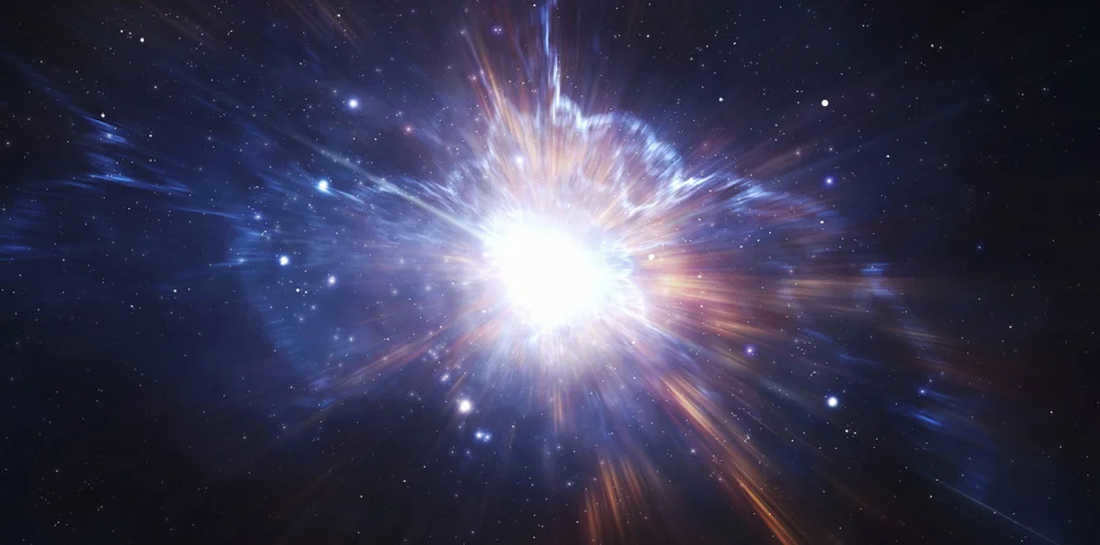
They argue that during a specific period in the past, the laws of physics in the universe functioned in a different manner compared to the present, resulting in significant implications for its subsequent development. This phenomenon is referred to as “symmetry breaking,” where the universe favored certain shapes over their mirror images.
Feeling overwhelmed? Let’s attempt to make it a tad easier. The findings of the UF specialists have two main points. Initially, the breach of parity (or CP-invariance, which is significant in the theory of matter surpassing antimatter) may have influenced subsequent galaxies solely during the phase of intense expansion in the initial stages of the Universe’s existence. To put it simply, this concept supports a fundamental aspect of the Big Bang theory explaining the creation of the cosmos. We delved deeper into the Big Bang (or “booms”?) in our recent discussion.
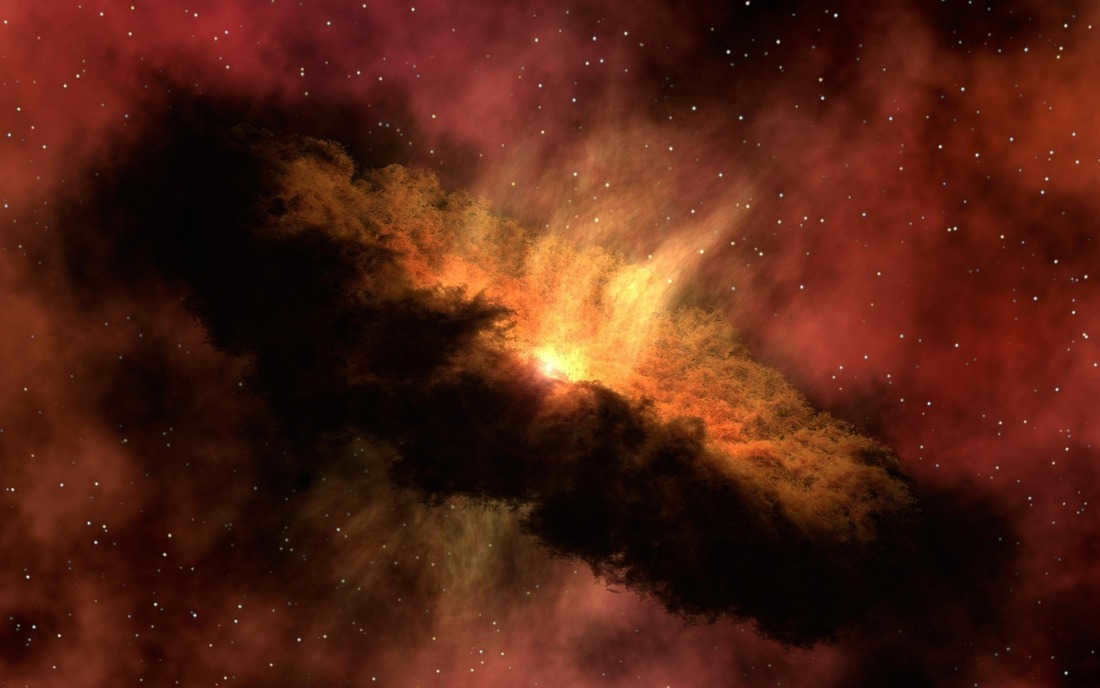
Furthermore, the concept of parity violation provides a solution to the query posed in the heading: what is the origin of the universe’s existence? Parity violation is a crucial factor in elucidating the prevalence of matter over antimatter. Consequently, it serves as a pivotal prerequisite for the emergence of galaxies, stars, planets, and life in its entirety as we comprehend it.

Zachary Slepian, a professor of astronomy at the University of Florida who led the research, expressed the significance of the findings in the following way: “I have always had a fascination with the fundamental mysteries of the universe. How did it all begin? What are the laws that govern its evolution? Why does anything exist at all? This study tackles these profound questions.”
What is precisely meant by the term “parity symmetry” discussed earlier? To put it simply, it refers to the concept that the laws of physics should not prefer one form over its reflection.
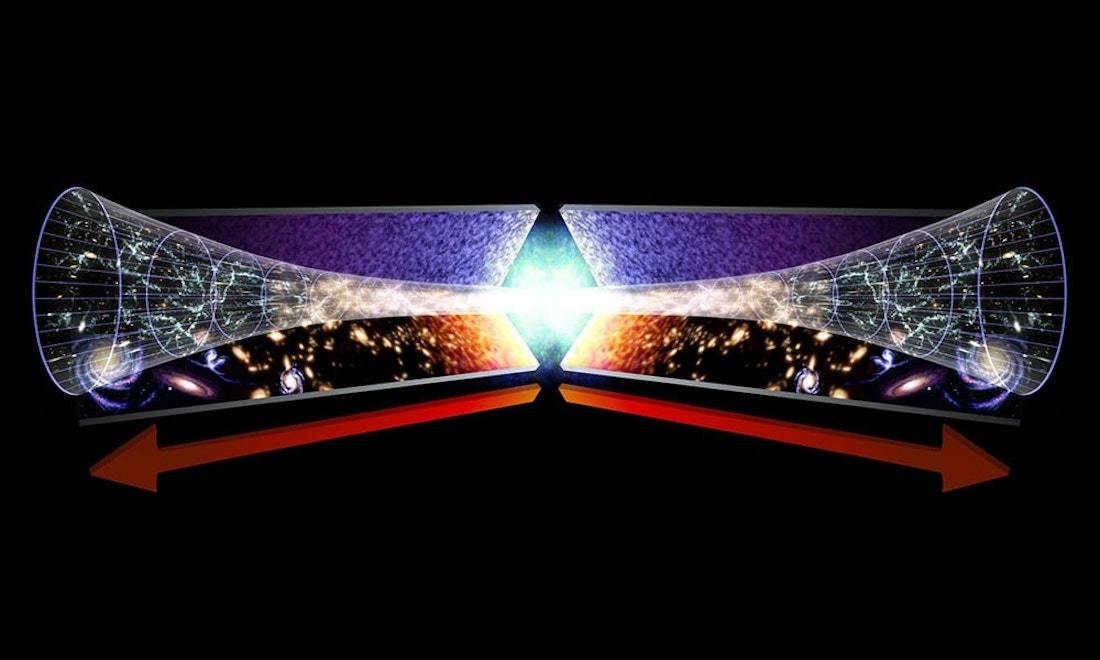
When talking about the property, scientists commonly refer to it as handedness, as our left and right hands are essentially “mirror images” of each other. In three-dimensional space, it is impossible to rotate the left hand in such a way that it perfectly matches the appearance of the right hand. Therefore, they can always be distinguished from one another, as physical laws, like radioactive decay, apply in the same manner.
However, if this symmetry were to be broken, the universe would exhibit a preference for either a “left-handed” or “right-handed” shape. To determine which side it favors, physicists have presented all possible combinations of four galaxies connected by imaginary lines in space. This arrangement forms a three-dimensional object known as a tetrahedron, which resembles a curved pyramid and is the simplest shape with a mirror image.
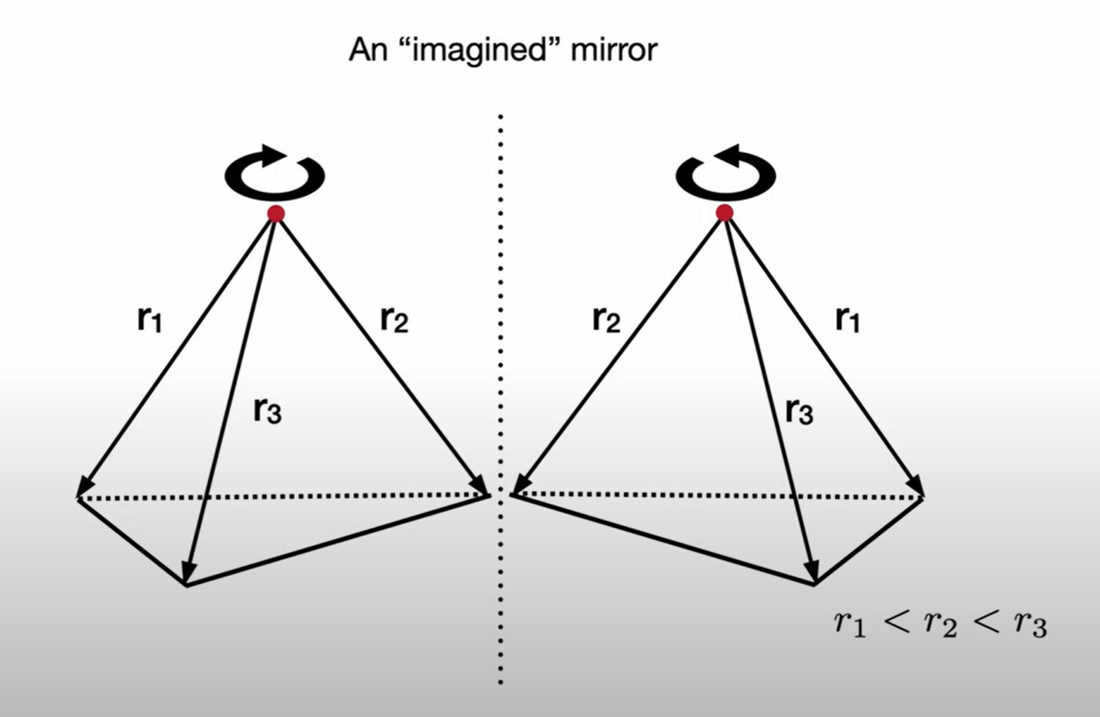
Slepian and his colleagues successfully distinguished between right and left galactic tetrahedra by examining the relationships between galaxies and their nearest and farthest “partners” within these geometric shapes. This required extensive computations. “To accomplish this, we had to analyze trillions of hypothetical tetrahedra for each of the millions of galaxies, which is an astonishingly large number of combinations.” Ultimately, the team determined that the HiPerGator supercomputer was indispensable – their developed mathematical formulas enabled them to complete the vast array of calculations within a reasonable timeframe.
The Universe retains its own “inclinations”
The findings were peculiar, although it remains challenging to precisely ascertain whether the Universe has favored “right-handed” or “left-handed” configurations. However, indications that it does possess certain “inclinations” were discovered.
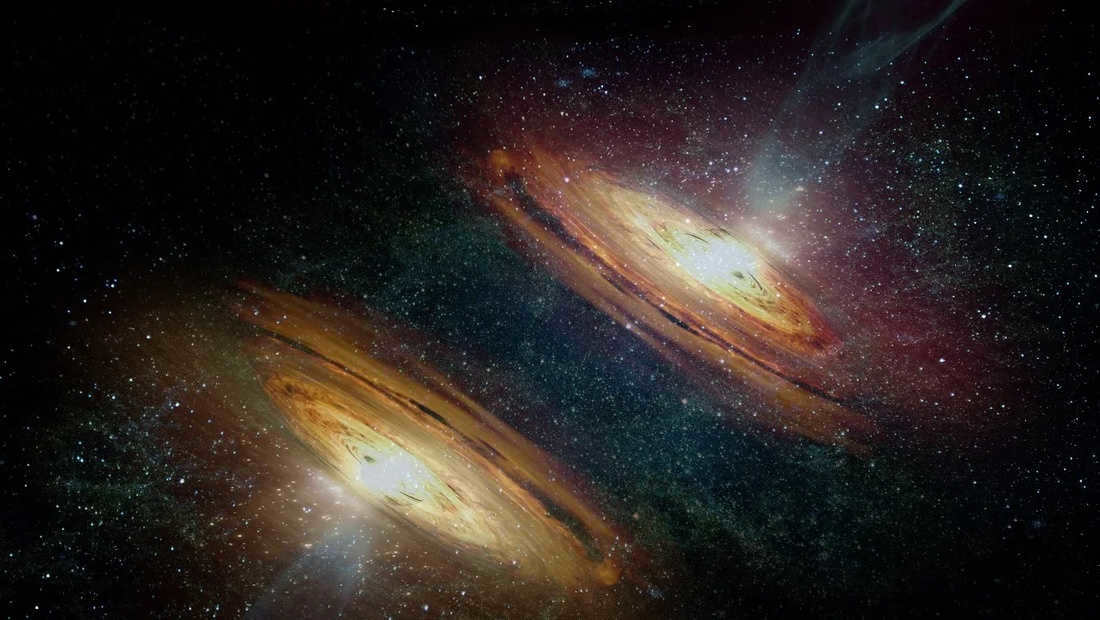
To be more specific, the conclusions were found to have a reliability of seven sigma. In the field of physics, findings with a value of five sigma (or higher) are generally considered to be reliable, as the likelihood of a random response at this level is extremely low.
Although the researchers have confidence in the signal of parity violation, there is still a chance that the asymmetry could be explained by measurement uncertainties. However, with larger samples of galaxies from upcoming telescopes, it is expected that enough data will be gathered in the next few years to eliminate these uncertainties.
“Given that parity violation can only occur during inflation (a period of rapid expansion) and if our findings are accurate, it presents compelling evidence for the theory,” Slepian added.
Why is this crucial? Let’s simplify once more. In a symmetrical Universe, the occurrence of the Big Bang would have resulted in equivalent quantities of matter and antimatter, causing their mutual destruction and leaving the cosmos devoid of stars, planets, and other entities. However, this did not occur as expected – instead, a very different scenario unfolded.
Given that our Universe is primarily composed of matter, scientists have long been searching for indications of asymmetry during the “moment of creation” – and they have discovered it. The entirety of Slepian and his colleagues’ paper elucidates the reasons behind this phenomenon.
Is there still room for error?
Despite not making this claim, the researchers at the University of Florida agree that there is indeed a possibility for error. Currently, the laboratory findings do not offer a complete explanation for how we ended up with such an overwhelming surplus of matter. To answer this question, we will need to turn to “new physics” that goes beyond the Standard Model, which currently elucidates the structure of our modern universe.
“However, the results strongly imply that there was an imbalance during the initial moments of the Big Bang.” – concludes the paper. Scientists will now need to devise a theory that can account for both the symmetrical arrangement of the universe and the excess of matter.
The Boshongo tribe in central Africa holds the belief that in ancient times, the world consisted only of darkness, water, and the mighty god Bumba. However, one fateful day, Bumba became incredibly ill and regurgitated, resulting in the creation of the sun. As the sun’s rays touched the vast ocean, it evaporated, revealing the earth that had been concealed beneath its depths. In a miraculous sequence of events, Bumba proceeded to vomit forth the moon, the stars, and a multitude of animals. The first creature to emerge was the majestic leopard, followed by the formidable crocodile, the resilient tortoise, and finally, the advent of mankind. While the Boshongo tribe’s account of creation is captivating, let us now delve into the modern understanding of the universe.
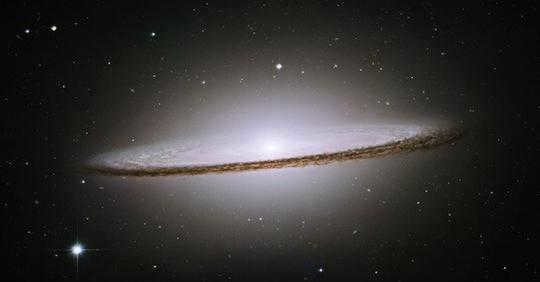
The cosmos is a vast and unfathomable expanse teeming with quasars, pulsars, black holes, galaxies, and matter. These elements perpetually interact and shape our conception of the universe. Often, stars in the cosmos are not solitary, but rather part of magnificent clusters. Some of these clusters may encompass hundreds or even thousands of such celestial bodies. Astronomers assert that smaller and medium-sized clusters, colloquially known as “frog spawn,” formed relatively recently. On the other hand, spherical formations are ancient and carry the echoes of the primordial cosmos. The cosmos is replete with such formations.
General information about the structure
Galaxies are formed by stars and planets. Contrary to popular belief, galaxy systems are highly mobile and are constantly moving in space. Stars themselves are also variable, being born and dying to become pulsars and black holes. Our Sun is considered a medium-sized star, with a relatively short lifespan of around 10-15 billion years in the grand scale of the Universe. It is worth noting that there are billions of other stars in the Universe, many of which have similar characteristics to our Sun, and countless systems resembling our Solar System. One such example is the Andromeda Nebula, which is relatively close to our own system.
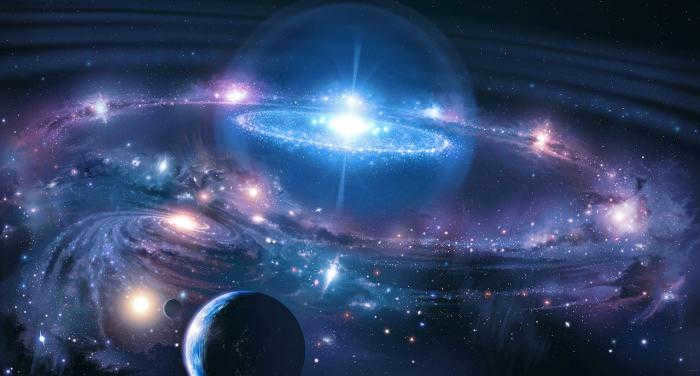
This is the name of our universe. However, the universe is not a straightforward concept, as it contains countless enigmas and paradoxes that remain unresolved.
Challenges and Paradoxes in the Theories
The ancient civilizations’ myths surrounding the origin of everything, similar to countless others before and after them, aim to provide explanations for the questions that pique our curiosity. Why do we exist? Where did the planets in the universe originate from? What is the source of our existence? Naturally, it is only now, with the advancement of our technology, that we are beginning to grasp some semblance of clarity. However, throughout the course of human history, there have always been dissenters within our species who rejected the notion of a definitive beginning to the Universe.
Take, for instance, Aristotle, the renowned philosopher from ancient Greece. He held the belief that the concept of the “origin of the universe” was inaccurate because he believed it had always been in existence. According to him, something eternal is far more perfect than something that is created. His reasoning behind this belief was simple: Aristotle refused to accept the notion of any higher power that could have created the universe. However, his opponents in heated debates would often bring up the creation of the universe as evidence for the existence of a supreme intelligence.
On the other hand, Kant, who had been pondering over a certain question for a long time, found himself troubled: “What existed before the universe came into being?” He realized that the existing theories of that time were riddled with logical contradictions. As a result, the scientist came up with the antithesis, which is still utilized by some models of the universe today. Here are its main premises:
- Why did the universe delay its origin for an eternity?
- What is the purpose of time in an eternal universe; why measure eternity at all?
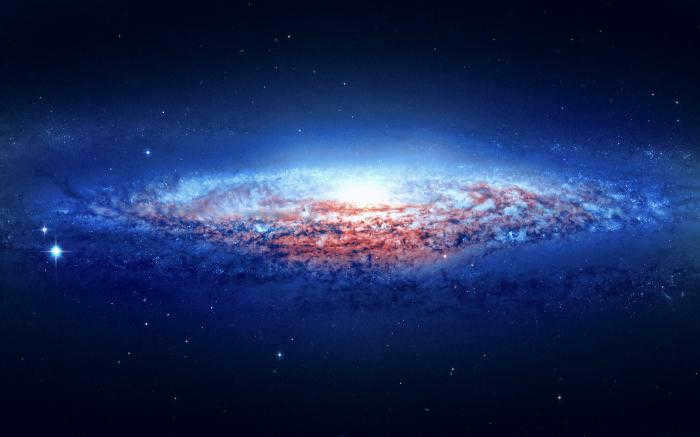
Undoubtedly, during his time, he posed questions that went beyond the norm. However, in the present day, these inquiries have become somewhat outdated, yet there are still certain scientists who unfortunately continue to base their research on them. Einstein’s theory, which provides insight into the structure of the Universe, definitively debunked Kant’s (or rather, his successors’) metamorphosis. What made this discovery so remarkable to the scientific community?
Einstein’s Perspective
In Einstein’s theory of relativity, the concepts of space and time were no longer fixed and absolute, but rather subject to dynamic evolution influenced by the energy present in the universe. According to Einstein, time is so uncertain that it is unnecessary to establish a specific definition for it. It would be akin to determining a direction south of the South Pole – a futile endeavor. Any proposed “beginning” of the universe would be artificial, as the notion of “earlier” times becomes nonsensical. This is not merely a physical conundrum, but a profoundly philosophical one. Today, humanity’s finest minds are diligently pondering the origins of celestial bodies in outer space.
Latest updates on the origin of the universe
The time period known as “The Middle Ages of the Universe” refers to a dark era that predates the formation of the first stars and galaxies.
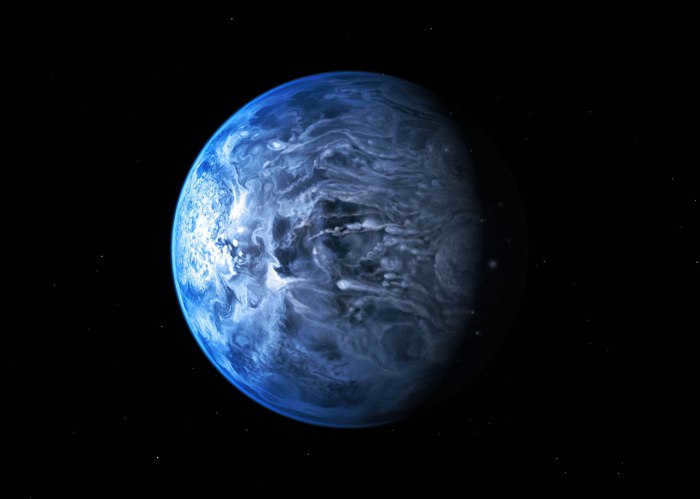
During those enigmatic epochs, the initial heavy elements were forged, from which we and the surrounding world are crafted. Scientists are currently constructing primary models of the cosmos and devising methods to probe the phenomena that transpired during that era. Contemporary astronomers posit that the universe is approximately 13.7 billion years old. Prior to the universe’s inception, the cosmos was so scorching that all existing atoms were cleaved into positively charged nuclei and negatively charged electrons. These ions obstructed all illumination, prohibiting its diffusion. An everlasting obscurity prevailed, with no perceptible termination in sight.
The dawn of existence
Around 400,000 years subsequent to the immense explosion known as the Big Bang, the vast expanse of space had cooled down enough for particles to merge and create atoms, leading to the formation of planets and the birth of light. This initial illumination, which still reverberates in the cosmos, is referred to as the “light horizon.” As for what transpired prior to the Big Bang, it remains an enigma. It is possible that another universe existed at that time, or perhaps there was nothingness – the concept of the Great Nothing. This notion is advocated by numerous philosophers and astrophysicists.
According to current theories, the formation of the first galaxies in the Universe commenced approximately 100 million years after the Big Bang, ultimately giving rise to our own cosmos. This ongoing process of galaxy and star formation gradually persisted until the majority of hydrogen and helium were assimilated into the newly emerging suns.
Unexplored Enigmas
There are numerous inquiries that could be resolved by delving into the events that originally transpired. For instance, when and how did the massively colossal black holes observed at the cores of virtually all substantial clusters come into existence? It is presently understood that the Milky Way harbors a black hole with a mass approximately 4 million times that of our Sun, and certain ancient galaxies in the Universe possess black holes of an unimaginable size. The most gargantuan example is the formation within the ULAS J1120+0641 system. Its black hole boasts a weight equivalent to 2 billion times the mass of our star. This galaxy came into being a mere 770 million years after the occurrence of the Big Bang.
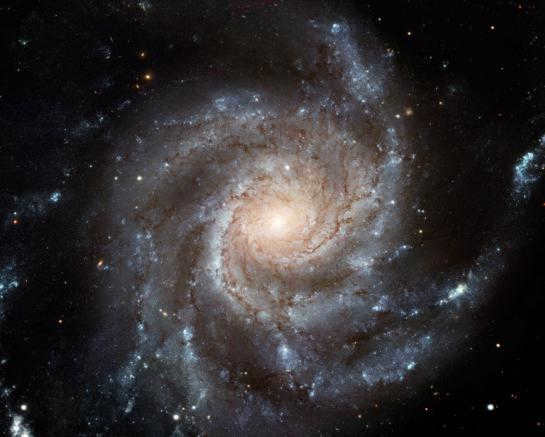
This is the primary enigma: based on contemporary theories, these colossal structures would not have had sufficient time to develop. Hence, how did they come into existence? What are the origins of these black holes?
At last, dark matter remains an enigma, constituting, according to numerous scientists, 80% of the universe. Its true nature eludes us, particularly when it comes to understanding its structure and the interactions among the elementary particles that comprise this enigmatic substance. Presently, it is believed that the constituent elements of dark matter have minimal interactions with one another, although this notion is contradicted by observations of certain galaxies.
Discussing the Issue of Stellar Origin
One intriguing matter to explore is the nature of the initial stars that gave rise to the stellar universe. These stars, existing in conditions of extreme heat and immense pressure within their cores, underwent transformations that led to the formation of vital elements like carbon, which serves as the foundation for life as we know it. Current scientific knowledge suggests that these first stars were significantly larger than our sun. It is possible that their lifespan was relatively short, lasting only a few hundred million years or possibly even less, thus potentially contributing to the formation of the earliest black holes.
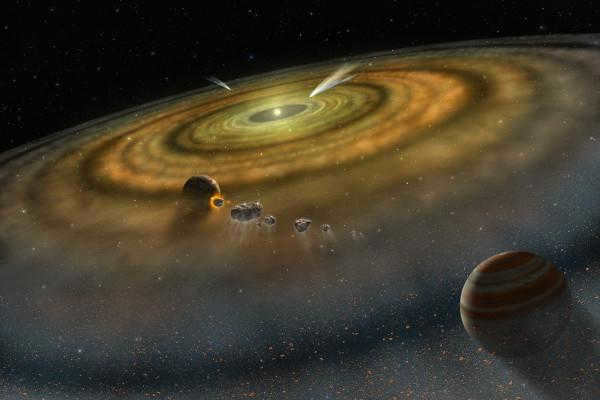
Nevertheless, it is possible that some of the “veterans” still exist in the modern universe. These objects are likely to have a scarcity of heavy elements. It is conceivable that certain formations of this kind may still be concealed within the halo of the Milky Way. This enigma remains unsolved. Such predicaments arise when attempting to answer the question, “What exactly is the Universe?” In order to study the initial stages following its inception, the search for the earliest stars and galaxies is of utmost importance. Naturally, the oldest entities are expected to be located at the outermost reaches of the observable universe. The only challenge lies in the fact that only the most advanced and powerful telescopes are capable of reaching these distant regions.
The James Webb Space Telescope is generating high expectations among researchers. Its purpose is to provide scientists with valuable data about the initial group of galaxies that emerged shortly after the Big Bang. There are scarce images of these entities at an acceptable level of quality, which leaves room for significant discoveries in the future.
An astonishing radiance
All galaxies emit light. Some formations emit light strongly, while others have a more moderate “brightness”. However, there exists the most luminous galaxy in the entire universe, which radiates with an intensity unlike anything else. Its official designation is WISE J224607.57-052635.0. This “light bulb” is located an astounding distance of 12.5 billion light years away from our solar system, and it shines with the equivalent brightness of 300 trillion suns combined. It is worth noting that around 20 such galaxies have been discovered thus far, and one must also consider the concept of the “light horizon”.
